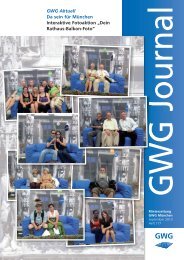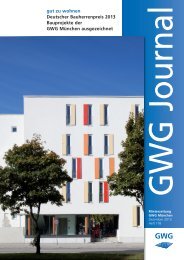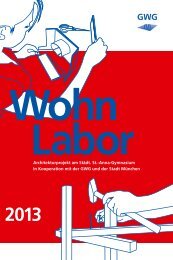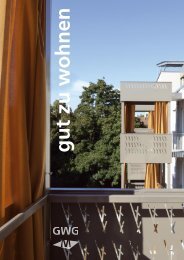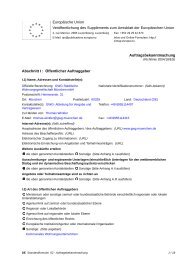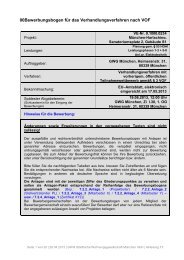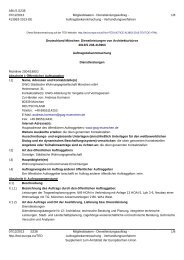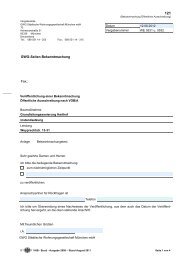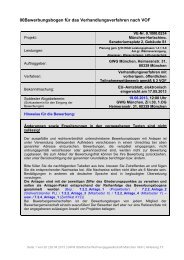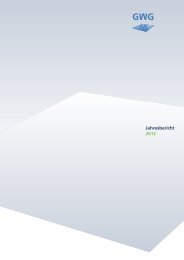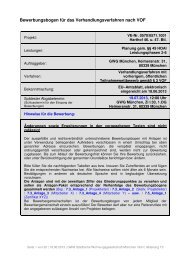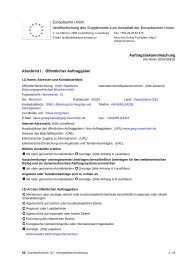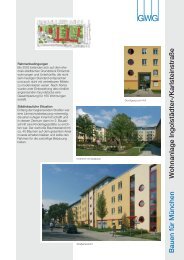New build - GWG München
New build - GWG München
New build - GWG München
You also want an ePaper? Increase the reach of your titles
YUMPU automatically turns print PDFs into web optimized ePapers that Google loves.
The expanding city:<br />
Sendling and<br />
Sendling-Westpark<br />
The farming village of Sendling was first<br />
mentioned in 782. There were villages<br />
all the way to Wolfratshausen almost<br />
until the end of the nineteenth century,<br />
at which point Munich looked to the<br />
south and found Ober-, Mitter- and<br />
Untersendling (Upper, Middle and Lower<br />
Sendling) on the Isar slope, to be a<br />
sanctuary in the face of the rampant<br />
housing shortage. At that time, the<br />
Sendling-Westpark of today did not<br />
even exist.<br />
“Munich has only one graveyard before<br />
the Sendling Gate”, writes Karl<br />
Baedecker 1846 in his “Handbook for<br />
Travellers in Germany and the Austrian<br />
Empire State.” A “large number of<br />
monuments remind one of those who<br />
have passed away.” The father of the<br />
travel guide also remarks on the holy<br />
water font, “constructed in 1831 in<br />
memory of the upland farmers who fell<br />
at Sendling at Christmas 1705 for the<br />
royal house.” Of course, Sendling’s<br />
Night of Murder is an essential part of<br />
Sendling’s history, but history didn’t stop<br />
there. Or, perhaps we should say that it<br />
largely bypassed the villages on the<br />
southern side of the Bavarian capital.<br />
If, in 1890, you had taken the difficult<br />
path along what was to become the<br />
Lindwurmstrasse, you would have been<br />
surrounded by farmers’ fields, which<br />
would later gradually give way to tenements,<br />
residential blocks and small<br />
apartments for workers and tradesmen,<br />
as well as industrial <strong>build</strong>ings. Then, the<br />
Südbahnhof was built, connecting<br />
today’s District 6 to the rail network.<br />
Warehouses were built, followed by the<br />
slaughterhouse in 1876 and the great<br />
market halls in 1910, around which further<br />
shops and businesses resided. Up<br />
until the 1920s, it was the residential<br />
blocks for low earners that characterised<br />
Sendling more than anything else. The<br />
former town centre, high above the<br />
Isar, with its Old Sendling Church of<br />
St. Margaret, was not incorporated into<br />
the City of Munich until 1 st January<br />
1877. This of course included the fields<br />
and meadows to the west, the area that<br />
would later form the site of Sendling-<br />
Westpark.<br />
Section of the city map from 1929 showing<br />
the first urban planning for what<br />
was at the time still an agricultural area.<br />
59



